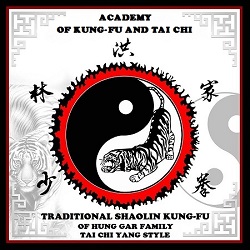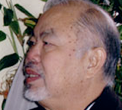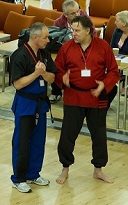Kung Fu Sui Lam Hung-Gar Khin
INTRODUCTION TO HUNG GAR BARE HAND FORMS
Hung Gar Kung Fu has been one of the most popular styles of Kung Fu practiced in Southern China. Hung Hee Goon created the Hung Gar Kung Fu during the late 1700s. With the ´Tiger And Crane´ technique, Hung Gar Kung Fu is known as the ´Tiger-Crane Style´ because of the two animals that symbolizes the unique characteristics of this style.
Hung Gar Kung Fu is a complete system of Chinese Martial Arts known for its powerful no-nonsense fighting and tremendous health benefits. Precision, accuracy, and dedication combined with long hours of disciplined training is needed to master this art. Each form teaches different key principles and skills, trains the student physically, mentally and spiritually. Every move in these forms serves a purpose and has a meaning. The more one practice and deeper one looks, the more one will unfold and understand.
The Hung Gar when praticed alone by way of Forms or Patterns (know as Tao or Kuen). These are a series of movements that have been choreographed together by the founding father, so that later generations of pratitioners could pratice the core movements of the style and develop the key concepts by simply practicing these movements.
The Four Pillars of Hung Gar which was introduced by Wong Fei Hung, Hung Gar's most famous practitioner, are Gung Ji Fook Fu Kuen, Fu Hok Seung Ying Kuen, Ng Ying Kuen And Tit Sin kuen. Translates to: Cross Tiger Fist Set, Tiger Crane Double Pattern Set, 5 Animals/Elements Set, and Iron Wire set.
Gung Gee Fook Fu Kuen (Taming the Tiger)
The Gung Gee Fook Fu Kuen is one of the oldest Shaolin fist forms and was transmitted by the last abbot of the monastery, Jee Sin Sim See, to one of his best students, Hung Hee Gung. One of the longer forms of the system, it is without a doubt a form of obligatory knowledge for all the unconditional ones of Hung Gar Kung Fu, since it incorporates all the ancestral baggage on the breathing, the health and the fighting techniques. The practice of this long and intense Form will develop the physique of the students and allow them to make a substantial progress.
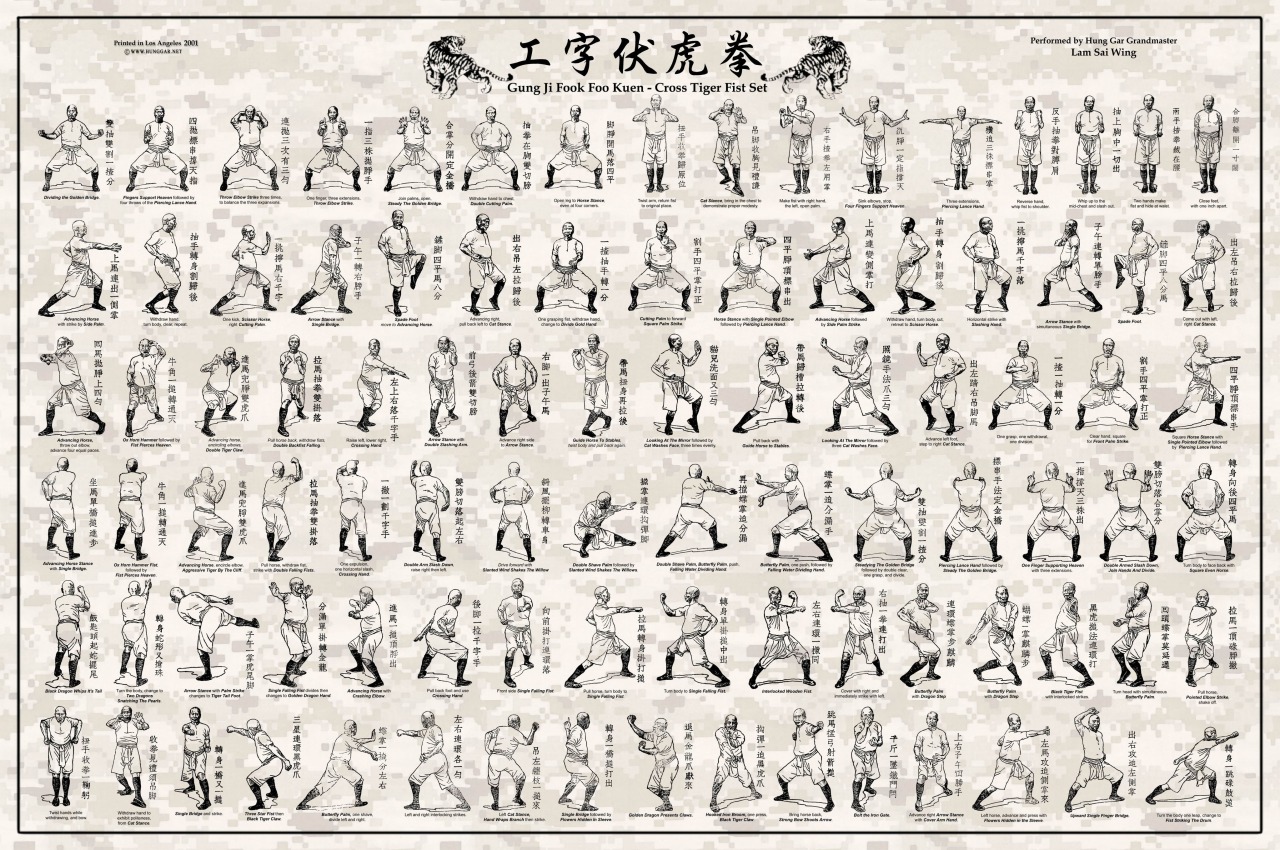
Foo Hok Seung Ying Kuen
(Tiger and Crane) It is considered the symbol form of style. Tiger and crane, in fact, are also the animals we find on the coat of arms of Hung Ga style. If Gung Ji forms the technical part Foo Hok forms the spiritual one. The G.M. Chiu Chi ling affirms that do not exist secrets to execute this form but it is important to understand animals' essence, deeply. The creation of this form is attributed to Hung Hei Gwoon and his wife Fong Wing Chun who was expert in the crane style. The version we today know was elaborated and codified by Wong Fei Hung. The form is executed with many pauses and is characterized by the powerful movements of tiger (which is pure outside strength) and the agile and fast dodging movements of crane which, while they are executed, also exercise the balance very well. During the form, the crane interpretation exercises internal balance and athlete must strive himself to assume an internal attitude of quietness and calm. Instead tiger exercises in the athlete courage and decision.
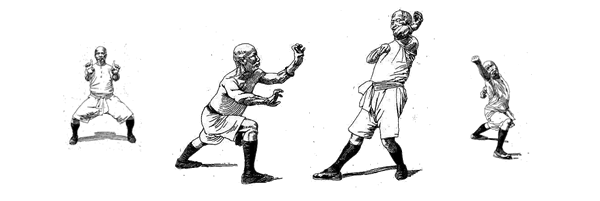
Ng Ying Kuen
(Five Animal Five Element Fist)These routines serve as a bridge between the external force of Tiger Crane and the internal focus of Iron Wire. "Five Animals" (literally "Five Forms") refers to the characteristic Five Animals of the Southern Chinese martial arts: Dragon, Snake, Tiger, Leopard, and Crane. "Five Elements" refers to the five classical Chinese elements: Earth, Water, Fire, Metal, and Wood. The Hung Ga Five Animal Fist was choreographed by Wong Fei Hung and expanded by Lam Sai Wing, a senior student and teaching assistant of Wong Fei Hung, into the Five Animal Five Element Fist (also called the "Ten Form Fist")
Tit Sin Kuen
(Iron Wire Fist) It is the highest and most difficult form of Hung Gar style. It is based on control of respiration and emission of sounds. Its name takes origin from its techniques which, for a correct execution, must be as hard as the iron and as soft as a thread. This form is a little finishing line for an Hung Ga athlete. The creation of this form is attributed to Tit Kiu Saam. With this form the martial Hung Gar artist reaches the last aim as student and examines in detail the internal part of martial art; this is the true essence of Chinese martial arts. The emission of sounds expresses some emotions like happiness, anxiety, sadness and fear. Every sound is connected to a beneficent action aimed at a specific internal organ "read more with this excelente article."
The 10 Sounds of Iron Thread Set (Tit Sin Kyun)Kung Fu Sui Lam Hung-Gar Khin, 8 Ferry Road, Scunthorpe, DN15 6SE, United Kingdom.
07460 867 168 | info@hunggar-scunthorpe.com | Join us on Facebook
